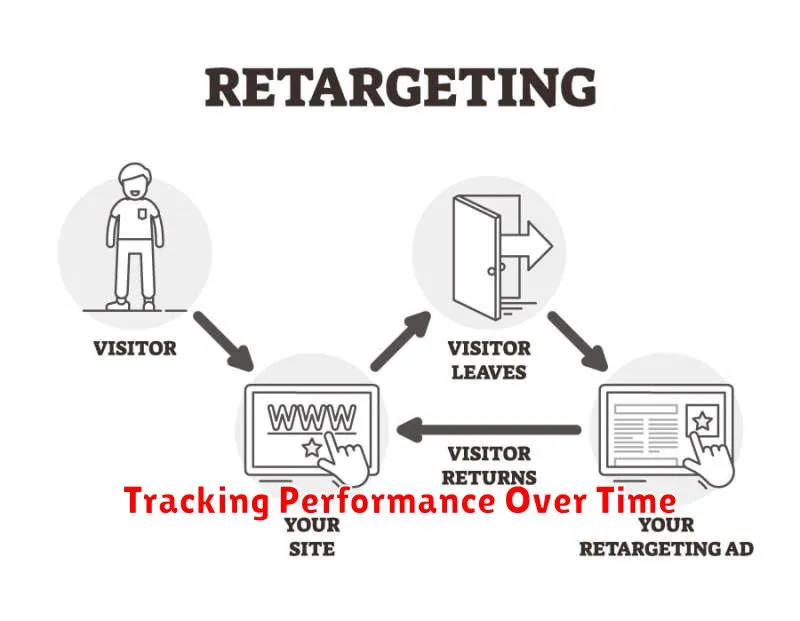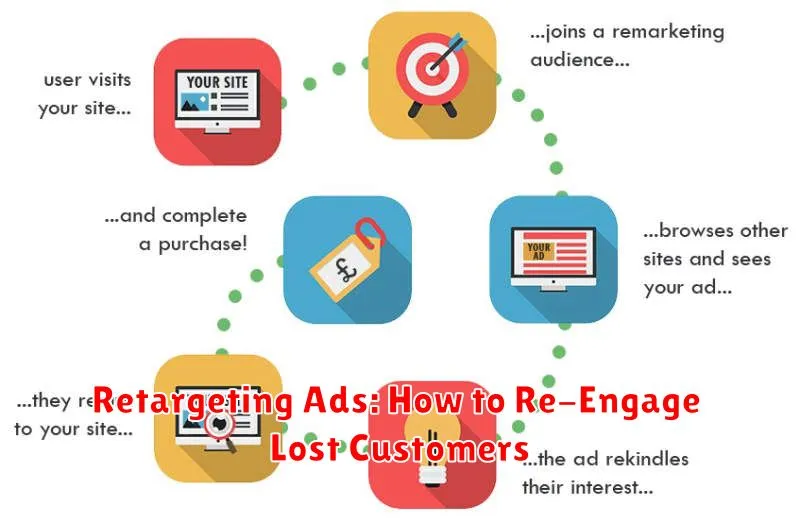Have you ever browsed a product online, left the site, and then seen ads for that exact product following you around the web? That’s retargeting advertising, a powerful strategy designed to re-engage lost customers and bring them back to complete a purchase. Retargeting ads are a highly effective way to recapture lost sales, improve ROI, and reinforce brand awareness with users who have already demonstrated an interest in your products or services. By strategically displaying targeted ads to these individuals, you can significantly increase your conversion rates and maximize the impact of your marketing efforts.
This article will delve into the mechanics of retargeting ads, explaining how they work and why they are so effective. We will explore various retargeting strategies, including pixel-based retargeting and list-based retargeting, and provide actionable tips on how to implement them for your business. Learn how to effectively utilize retargeting campaigns to reconnect with lost customers, increase sales, and drive revenue growth. Discover the best practices for creating compelling retargeting ad creatives and segmenting your audience for optimized performance. This comprehensive guide will empower you to harness the full potential of retargeting advertising and transform lost opportunities into valuable conversions.
Understanding Retargeting Basics
Retargeting, also known as remarketing, is a powerful digital advertising technique that allows you to re-engage users who have previously interacted with your website or mobile app. It works by tracking these users through the use of cookies or pixels, which are small pieces of code placed on your website. These cookies identify users who have visited specific pages or taken certain actions, like adding items to a shopping cart.
When these users later browse the web, the tracking data informs ad platforms to display your ads specifically to them. This serves as a reminder of their previous interest and encourages them to return to your website to complete a desired action, such as a purchase or signup.
Retargeting is highly effective because it focuses your advertising spend on individuals who have already demonstrated an interest in your products or services, thus increasing the likelihood of conversion.
How Retargeting Works with Pixels
Retargeting relies heavily on pixels, small snippets of code placed on your website. These pixels are invisible to visitors but play a crucial role in tracking their behavior.
When a user visits your site, the pixel drops a cookie in their browser. This cookie acts as an identifier, tagging the user as someone who has shown interest in your products or services.
Later, when this tagged user browses other websites within the retargeting network (e.g., social media platforms or ad networks), the pixel recognizes the cookie. This triggers the display of your targeted ads, reminding them of their previous visit and encouraging them to return to your website.
Different types of pixels exist, including impression pixels that track ad views and conversion pixels that record actions taken on your site after clicking an ad, like completing a purchase.
Segmenting Visitors for Precision

Effective retargeting relies on precise segmentation. This allows you to tailor your messaging and offers to specific visitor behaviors, maximizing your chances of re-engagement. Segmentation moves beyond simply showing the same ad to everyone who visited your site.
Consider segmenting your audience based on factors such as:
- Pages Visited: Someone who visited your pricing page demonstrates a higher level of purchase intent than someone who only browsed your blog.
- Products Viewed: Retargeting with ads featuring previously viewed products keeps those items top-of-mind.
- Cart Abandonment: Offer incentives like free shipping or discounts to encourage completion of the purchase.
- Past Purchases: Tailor ads to offer complementary products or promote new arrivals to existing customers.
By analyzing these behaviors, you can create highly targeted ad campaigns that resonate with each segment and drive conversions.
Designing High-Impact Ads

Effective retargeting hinges on compelling ad creatives. Ads should grab attention and entice users to return to your site. A strong visual element is crucial. This could be a product image, lifestyle shot, or graphic design, ensuring it’s high-quality and relevant to the target audience.
Messaging is equally vital. Keep it concise and benefit-driven. Highlight the value proposition of your product or service. Remind users why they were initially interested and offer an incentive to complete their purchase, such as a discount or free shipping.
Clear call-to-actions are essential. Use action-oriented language like “Shop Now,” “Learn More,” or “Get Your Discount.” Ensure the button or link is visually prominent and easy to click.
A/B Testing for Optimization
Experiment with different ad variations to determine what resonates best with your audience. Test different visuals, messaging, and calls-to-action to optimize for click-through rates and conversions.
Tracking Performance Over Time

Consistent monitoring of your retargeting campaigns is crucial for maximizing their effectiveness. Track key performance indicators (KPIs) to understand what’s working and what needs adjustment.
Some important metrics to track include:
- Click-Through Rate (CTR): This measures how often people click on your retargeting ads. A low CTR may indicate that your ad creative needs improvement.
- Conversion Rate: This shows the percentage of clicks that result in a desired action, such as a purchase or sign-up. A low conversion rate might suggest issues with your landing page or offer.
- Cost Per Acquisition (CPA): This metric calculates the cost of acquiring a new customer through your retargeting efforts. Monitoring CPA helps you optimize your spending and ensure profitability.
- Return on Ad Spend (ROAS): ROAS measures the revenue generated for every dollar spent on retargeting. This is a key metric for evaluating the overall success of your campaigns.
Regularly analyze these KPIs to identify trends and make data-driven decisions. For example, if your CTR is high but your conversion rate is low, you might need to refine your targeting or landing page experience. By tracking performance over time, you can continuously optimize your retargeting campaigns and achieve better results.

